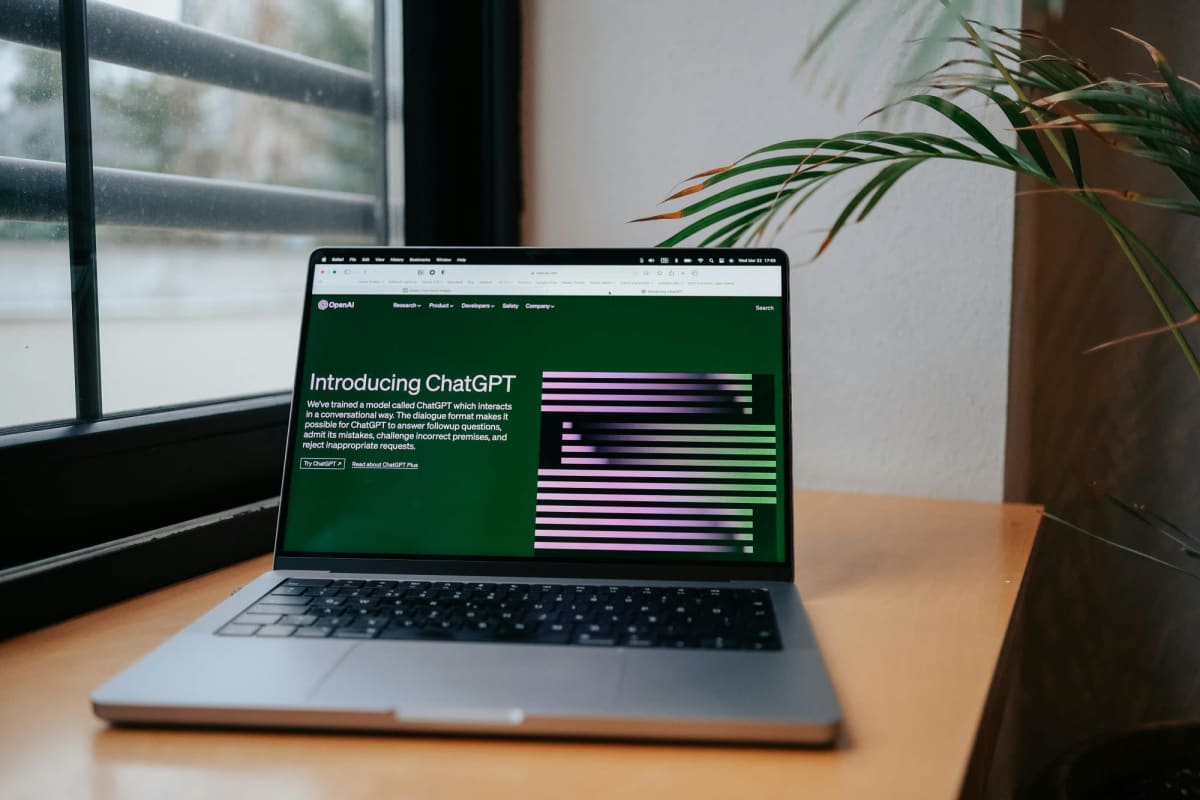Earn
How to build an effective influencer marketing campaign
Because of influencer marketing’s proven effectiveness, it has replaced certain forms of traditional advertising.
How to build an effective influencer marketing campaign
Marketers are now fully aware that they can boost their reach to consumers by working with personalities that have large followings on their websites and social media networks.
An effective influencer marketing campaign can help you boost brand awareness, build brand authority and reach new audiences. It can ultimately drive traffic to your site and lead new customers to your products and services to generate sales.
But while the use of influencer marketing has significantly increased, there is still confusion on how to create a successful marketing campaign.
The key to creating a good influencer marketing strategy is following the right steps in planning, research and nurturing relationships with influencers consistently.
What is influencer marketing?
Influencer marketing is a form of digital marketing that involves businesses and brands working with influencers to help them promote or endorse their product or service on social media platforms.
To learn more about what influencer marketing is and how it works, you can read here.
Who are influencers?
An influencer is someone who is considered as an expert in a certain niche with a large social media following. These digital personalities also have a high engagement rate with their audience, allowing the creation of a strong relationship with their followers. Generally, an influencer is perceived as someone who has the power to affect the purchase decision of other people due to their established authority in a specific topic or field expertise and their strong rapport with their audience.
The size of an influencer’s following will depend on the size of the niche he or she chooses to operate in. A bigger industry or niche will mean more followers due to the wide potential target audience.
How to build an effective influencer marketing strategy
There is no one-size-fits-all marketing campaign. Like any marketing strategy, an influencer campaign requires deliberate targeting and planning to create a plan that will be the perfect fit for your brand and its goals. Here are the basic steps you can follow to create an effective influencer marketing campaign:
Step one: Set your goals
The best influencer marketing strategies all start by understanding your business targets and goals. List down what you would like to accomplish with your influencer campaign.
Defining your goals at the early stages of planning will get you on track and help you have a consistent strategy throughout the implementation of the campaign. It will also help you choose the metrics you should track and monitor to measure the accomplishments at the end of it.
Step two: Identify your target audience
After identifying your goals, the next step is to have a concise idea of the customers in your target markets. Before you start looking for influencers, outline the specific details about the people you want to connect with through your campaign. Therefore, it is important to create a “buyer persona”.
Knowing the buyer persona of your target audience is important in starting any influencer campaign. A buyer persona is a profile that depicts your target customer. Aside from the basic information, such as their location, age and gender, a buyer persona describes your ideal customers’ interests, what they spend their time on, their life situation, and how they make decisions.
Once you know your audience, it will be easier to identify the kind of people they follow on social media networks and which platforms they use often. This can help you create a more strategic campaign that will be fit for your potential customers.
With your target audience clearly defined, you can finally begin finding influencers you can work with to reach your goals and connect with your target market.
Step three: Find the right influencers for your brand
While influencer marketing has advantages, it can be a wasted investment if you are not working with the right influencers.
One of the main difficulties brands encounter when implementing influencer campaigns is finding the right content creators. The most common mistake is choosing influencers just because they have a large number of followers or a high engagement rate.
But the days of choosing the influencer with the most followers to promote your product or service are in the past. After all, being influential is all about context. You must find the right people who produce and share the type of content that can impact your business or your target audience’s decision-making process. Most marketers are now choosing the approach of “quality over quantity” and ensuring that they wisely allocate their budget.
Here are some factors to take into consideration before choosing to work with influencers:
Relevance – It is important for an influencer’s demographic to match your ideal audience. You must check if the content they are creating is aligned with your messaging. Do your research and check their posts to have a sense of what kind of consumer they can reach and if it matches your brand or product’s buyer persona.
Authenticity – Ideally, the influencers you work with should be an organic advocate for your brand, or a personality who is highly engaged with your ideal customers. Research shows that bloggers who have a smaller number of sponsored posts or content tend to be more trusted and are perceived as more authentic. Personal reviews and stories that include honest use or mention of a product, service or brand are more likely to influence audiences rather than a straight product review.
Engagement rate – Engagement rate is an indicator of how interactive an influencer’s audience is with the content they create. Do their followers respond, comment and share these posts? For example, if an influencer’s post on Instagram has a high number of likes and comments, it can serve as a gauge of the reach of sponsored posts if you choose to work with them.
Audience reach – While reach is not the most important metric, it is an important consideration when choosing influencers. However, it is not advised to base your decision only on unique visitors, traffic and followers as a measure of their audience reach. Remember, these metrics will only be meaningful if the influencer is reaching your brand’s target audience.
In fact, most marketers are choosing to work with influencers that have a lower number of following but are considered to be highly influential than their bigger counterparts.
A recent study showed that micro-influencers (who have a following that falls between 1,000 to 100,000) were seen as more impactful compared to an average person based on their perceived credibility, knowledge and expertise in the product or brand they promote. The study also showed that 82 per cent of those surveyed said they were highly likely to follow a micro-influencer’s recommendation.
Consistency – There is a direct correlation between how frequent a blogger posts and their traffic and rate of return visitors. Find an influencer that is consistent in posting in their Instagram account, Facebook or any other social media network. Having many returning audiences is important, as it often takes multiple exposures to get a visitor to click and check your website and you want to ensure that they return.
Having a solid business relationship with influencers who will work for your campaign is important for your marketing strategy to work. You can reach out to them via email or directly message them through their social media.
After getting acquainted with an influencer of your choice, you can discuss what kind of collaborations you intend to do with them. Some brands choose to take the organic route by giving products to influencers who are already advocates for their brand. Sometimes, brands choose a paid collaboration, wherein a digital personality may put up sponsored posts or promote affiliate links.
Whatever kind of work you want to do with an influencer, make sure that you have properly oriented them about the type of content and messaging that you want to convey through their platform.
Step four: Create effective and engaging content for your campaign
The next step is to plan the content that you want to produce with the influencer your brand is working with. Anyone can create content. But for it to be effective, it must resonate with your audience and help you achieve your goals.
Here are the three main considerations when producing content for your campaign:
- Is the content relevant to your brand, industry, products and services?
- Does it represent your brand’s beliefs and is it aligned with your brand’s core values or mission?
- Is the content created of high quality and something your brand would want to be associated with?
These factors will help you plan out the type of content you want and the type of influencer marketing campaign you want to undertake.
Step five: Measure your results
As you implement your influencer marketing program, you will want to keep track of its effectiveness.
To find out if you have reached your goals, track and measure results of the campaign. There are several metrics you can use to gauge the success, depending on the initial marketing objectives you have established.
In marketing, there are many key performance indicators (KPIs) that are used for different aspects of a strategy. But for influencer marketing, the five most important ones are the following:
Reach and brand awareness – For this KPI, measure how many new prospects have become aware of your product or service and how the campaign boosted its impression on your pre-existing customers. A good way to measure this is to check the impression data on your posts at different periods of the campaign.
Referral traffic – The amount of traffic the campaign drives to your site can give you an idea of not only the campaign’s reach, but also its overall success. Monitoring referral traffic can also help you determine how many people actually came to your site thanks to the campaign.
To track campaign-driven traffic, compare the post-campaign website traffic, page views, social mentions, time on site, site users metrics to pre-campaign numbers.
Audience growth – While this KPI may be easily mistaken with reach and awareness, the main difference is that audience growth measures if a user (after being initially impacted by a campaign) will remain as a loyal follower and will continue to engage with your posts or content. To track audience growth, you can use social media site analytics to monitor your followers and see how many new ones you gain during the campaign and compare the rise in followers to pre-campaign figures.
Engagement – This KPI provides a deeper insight into how your campaign was received. Traffic and reach will tell you how many people have seen your campaign, but audience growth and engagement will tell you how well it performed. Metrics under this KPI includes shares, likes, comments, brand mentions, video views and reactions.
Conversion rates – As with all marketing campaigns, the main goal is to drive growth and boost sales. One easy way to measure conversions generated by the influencer campaign is to record sales before, during and after the campaign and note any changes in sales that occurred when the campaign was running. It can also include changes in revenue or price per ticket.
Conversion is not just about sales. Anytime a target customer or audience completes a desired action (signing up for a newsletter, following social media accounts, joining a contest), it can be considered a conversion as well. Make sure to track all of these non-sale conversions.

Digital marketing
Influencer discussions on AI bubble surge 200% on X as concerns grow over massive investments
In a dramatic shift in online discourse, discussions surrounding the so-called "AI bubble" have surged by nearly 200% on the social media platform X during October 2025, according to GlobalData, a ...Read more

Digital marketing
Nvidia's $100 billion investment in OpenAI poised to transform AI landscape
A monumental partnership between OpenAI and Nvidia has become the focal point of discussions among technology influencers, with the latter committing up to $100 billion in a strategic collaborationRead more
Digital marketing
Facebook reaches deal with government, vows to restore news
Facebook intends to restore Australian news pages in the coming days, Treasurer Josh Frydenberg confirmed on Tuesday. Read more

Digital marketing
Facebook blocks access to health and emergency services
UPDATE: Facebook has confirmed for nestegg that while government pages "should not" be impacted, it has taken a broad definition of news content "in order to respect the law as drafted". Read more
Digital marketing
Facebook bans news sharing and viewing in Australia
Aussies will no longer be able to share or view local or international news content on Facebook, with the social media giant announcing late on Wednesday that it will restrict “publishers and people ...Read more

Digital marketing
Google’s threat to wave goodbye heats up calls for regulation
With the war between Google and Australia now in danger of seeing the search engine giant depart our shores, not everyone is certain the government should back down, with one expert urging it to stand ...Read more

Digital marketing
Consumers force brands to align with social causes
With consumers increasingly embracing social causes, their expectations of the products and brands they buy have altered significantly over the past few years. Read more

Digital marketing
Government called to toughen rules for big tech amid free speech debate
Australia is being urged to implement rules that require social media platforms to be transparent when closing someone’s account and offer a way for them to appeal it. However, politicians are being ...Read more

Digital marketing
Influencer discussions on AI bubble surge 200% on X as concerns grow over massive investments
In a dramatic shift in online discourse, discussions surrounding the so-called "AI bubble" have surged by nearly 200% on the social media platform X during October 2025, according to GlobalData, a ...Read more

Digital marketing
Nvidia's $100 billion investment in OpenAI poised to transform AI landscape
A monumental partnership between OpenAI and Nvidia has become the focal point of discussions among technology influencers, with the latter committing up to $100 billion in a strategic collaborationRead more
Digital marketing
Facebook reaches deal with government, vows to restore news
Facebook intends to restore Australian news pages in the coming days, Treasurer Josh Frydenberg confirmed on Tuesday. Read more

Digital marketing
Facebook blocks access to health and emergency services
UPDATE: Facebook has confirmed for nestegg that while government pages "should not" be impacted, it has taken a broad definition of news content "in order to respect the law as drafted". Read more
Digital marketing
Facebook bans news sharing and viewing in Australia
Aussies will no longer be able to share or view local or international news content on Facebook, with the social media giant announcing late on Wednesday that it will restrict “publishers and people ...Read more

Digital marketing
Google’s threat to wave goodbye heats up calls for regulation
With the war between Google and Australia now in danger of seeing the search engine giant depart our shores, not everyone is certain the government should back down, with one expert urging it to stand ...Read more

Digital marketing
Consumers force brands to align with social causes
With consumers increasingly embracing social causes, their expectations of the products and brands they buy have altered significantly over the past few years. Read more

Digital marketing
Government called to toughen rules for big tech amid free speech debate
Australia is being urged to implement rules that require social media platforms to be transparent when closing someone’s account and offer a way for them to appeal it. However, politicians are being ...Read more








